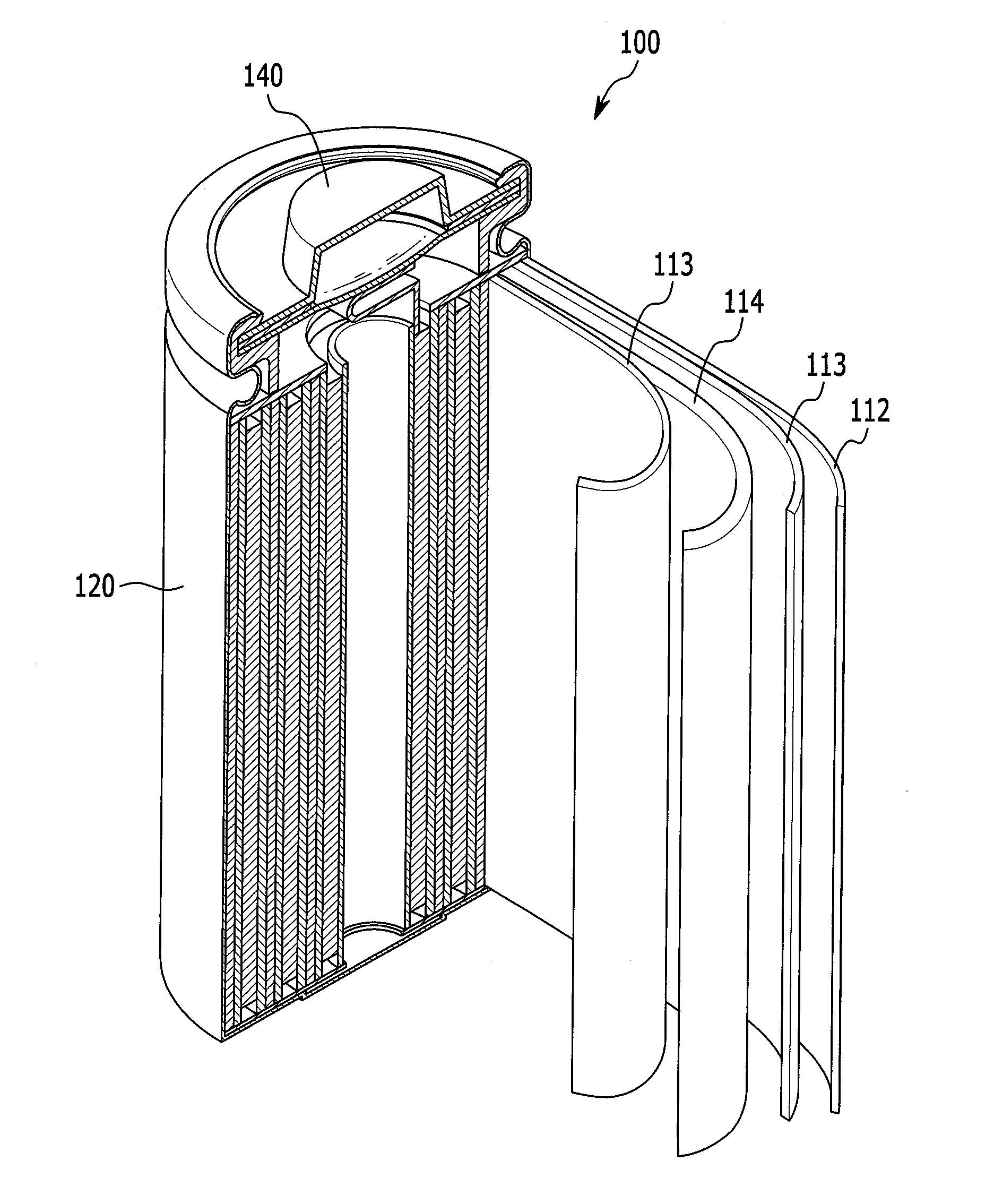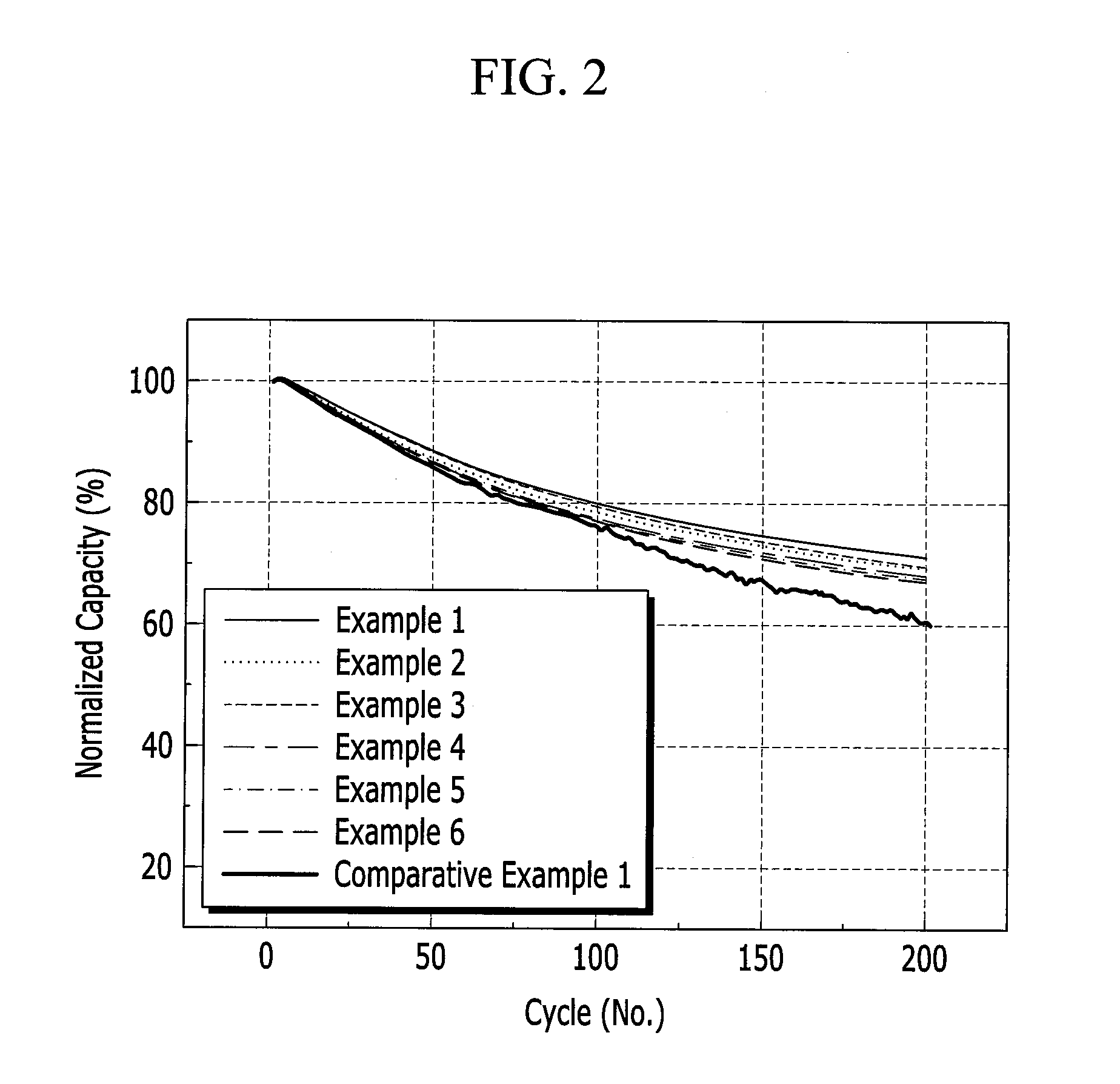Separator for rechargeable lithium battery and rechargeable lithium battery including the same
a technology of lithium battery and separator, which is applied in the direction of batteries, cell components, electrical equipment, etc., can solve the problems of hardly secure thermal stability, and achieve excellent thermal safety
- Summary
- Abstract
- Description
- Claims
- Application Information
AI Technical Summary
Benefits of technology
Problems solved by technology
Method used
Image
Examples
synthesis example 1
[0093]An acrylic-based copolymer was prepared by polymerizing sodium acrylate and acrylonitrile in a weight ratio of 50:50 according to the following method. Viscosity of the acrylic-based copolymer was 3,851 cps. Herein, the viscosity was measured at 62 spindles and 5 rpm by using a Brookfield viscosity meter. In addition, a reference solvent for measuring the viscosity was mineral oil (KS1000 & 5000) as a viscosity-based standard solution for correction.
[0094]For example, a reaction solution was prepared by mixing 363 g of distilled water with 62.4 g of a 20% sodium hydroxide aqueous solution and then, adding 25 g (0.347 mol) of acrylic acid, 25 g (0.471 mol) of acrylonitrile and 0.29 g (0.00126 mol) of ammonium persulfate thereto. The reaction solution was reacted for 4 hours by increasing the temperature up to 80° C., while the heating was controlled at a temperature of 65° C. to 70° C. Subsequently, the reaction solution was cooled down at room temperature, and a 20% sodium hyd...
synthesis example 2
[0095]An acrylic-based copolymer was prepared by polymerizing sodium acrylate and acrylonitrile in a weight ratio of 40:60 according to the following method. Viscosity of the acrylic-based copolymer was 4,457 cps.
[0096]The acrylic-based copolymer was prepared according to the same method as described in Synthesis Example 1 except for preparing a reaction solution by mixing 456 g of distilled water and 52.7 g of a 20% sodium hydroxide aqueous solution and then, adding 20 g (0.278 mol) of acrylic acid, 30 g (0.565 mol) of acrylonitrile and 0.29 g (0.00126 mol) of ammonium persulfate thereto. Non-volatile components in the reaction solution were measured, and the result was 9.3% (a theoretical value of 10%).
synthesis example 3
[0097]An acrylic-based copolymer was prepared by polymerizing sodium methacrylate and acrylonitrile in a weight ratio of 50:50. Viscosity of the acrylic-based copolymer was 5,127 cps.
[0098]The acrylic-based copolymer was prepared according to the same method as described in Synthesis Example 1 except for preparing a reaction solution by mixing 362 g of distilled water and 55.2 g of a 20% sodium hydroxide aqueous solution and then, adding 25 g (0.290 mol) of methacrylic acid, 25 g (0.471 mol) of acrylonitrile and 0.348 g (0.00168 mol) of ammonium persulfate thereto. Non-volatile components in the reaction solution were measured, and the result was 12.0% (a theoretical value of 12%).
PUM
| Property | Measurement | Unit |
|---|---|---|
| thickness | aaaaa | aaaaa |
| shrinkage ratio | aaaaa | aaaaa |
| thickness | aaaaa | aaaaa |
Abstract
Description
Claims
Application Information
 Login to View More
Login to View More - R&D
- Intellectual Property
- Life Sciences
- Materials
- Tech Scout
- Unparalleled Data Quality
- Higher Quality Content
- 60% Fewer Hallucinations
Browse by: Latest US Patents, China's latest patents, Technical Efficacy Thesaurus, Application Domain, Technology Topic, Popular Technical Reports.
© 2025 PatSnap. All rights reserved.Legal|Privacy policy|Modern Slavery Act Transparency Statement|Sitemap|About US| Contact US: help@patsnap.com



